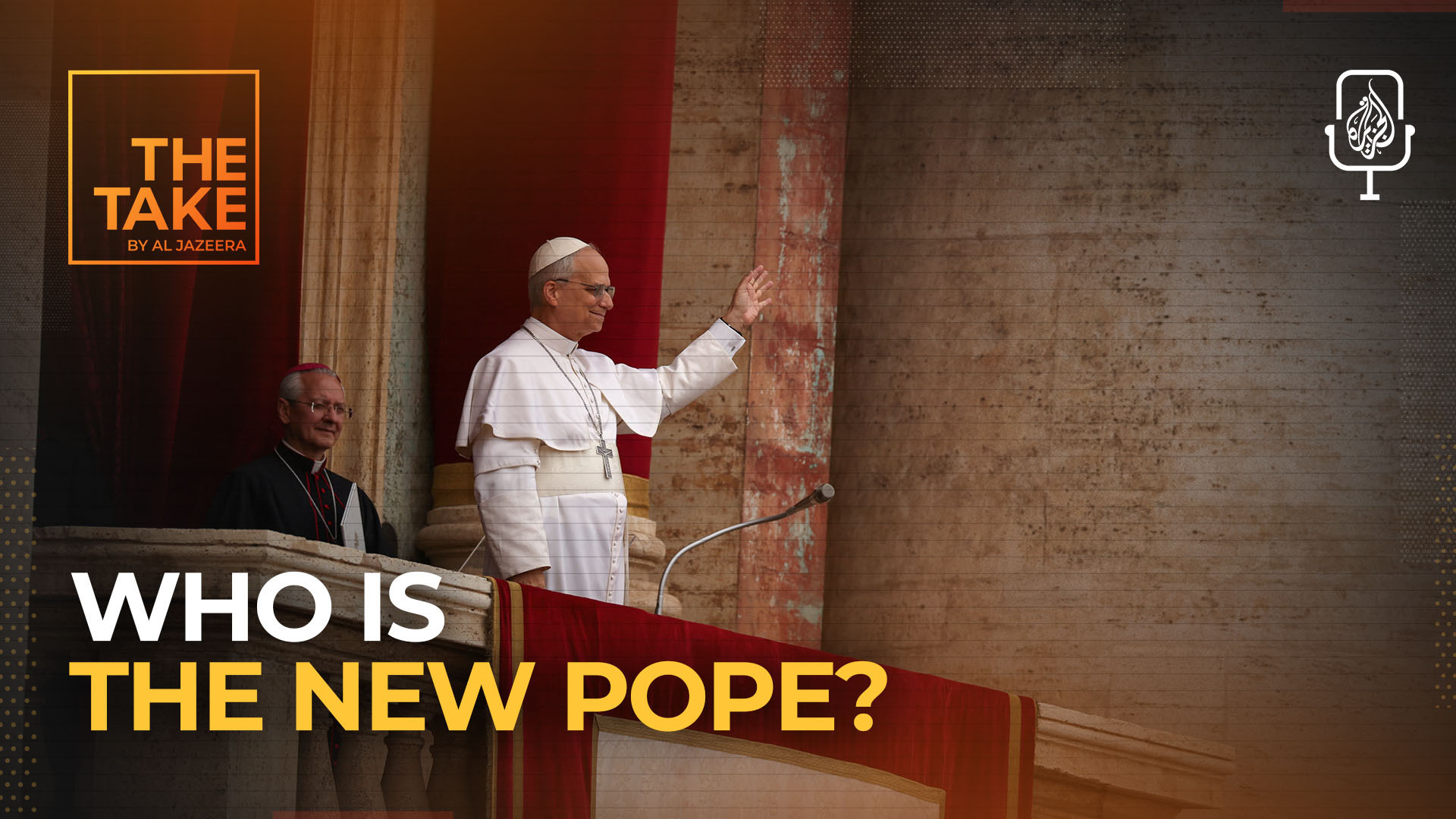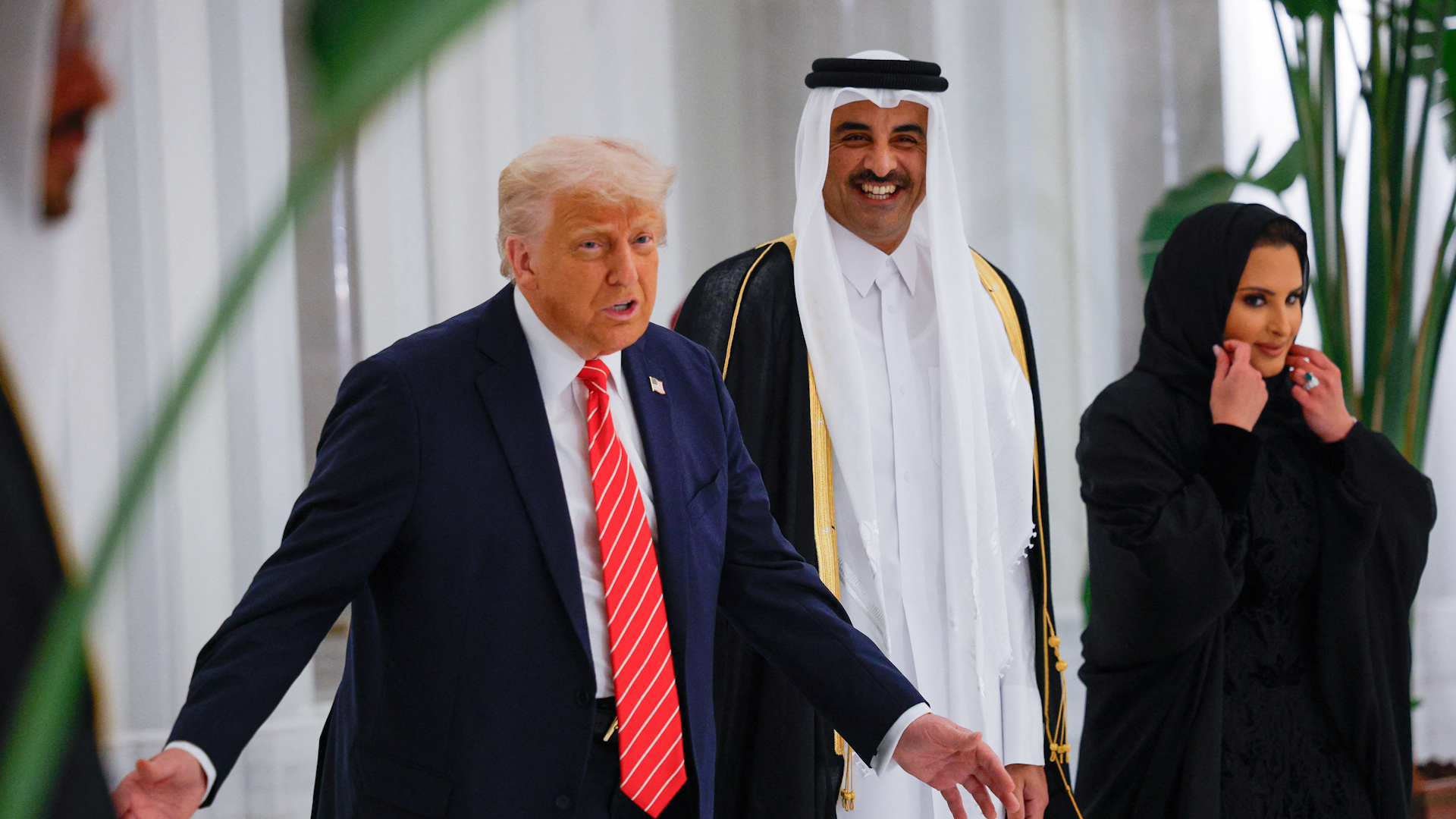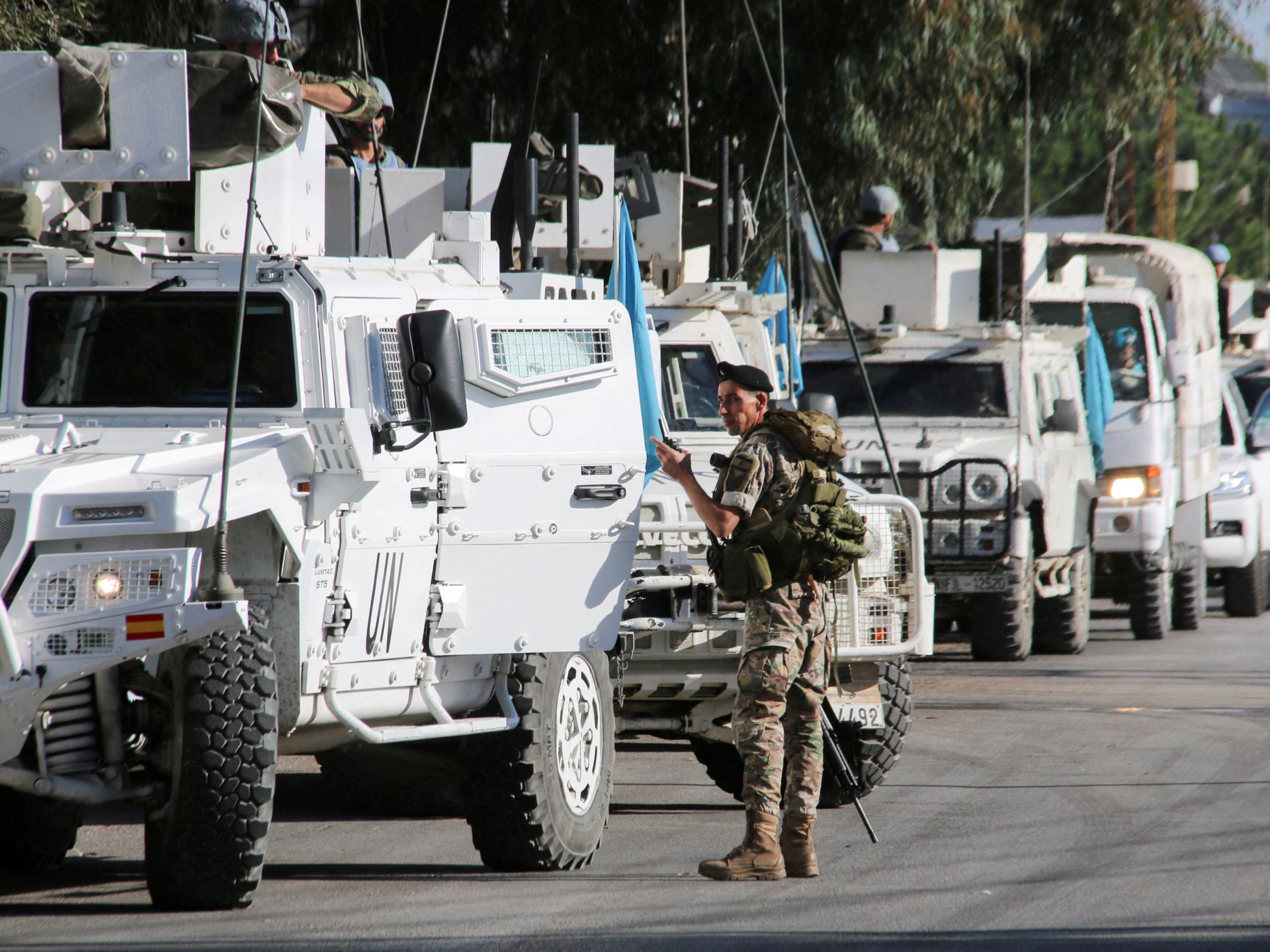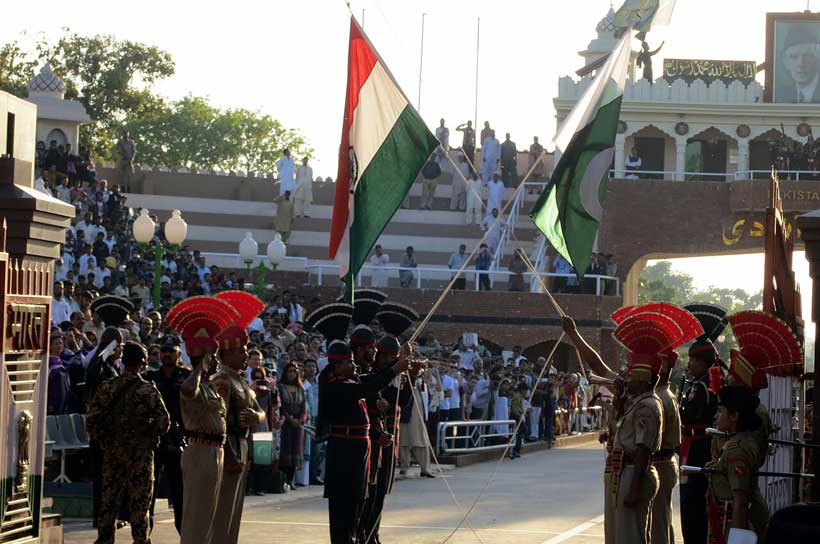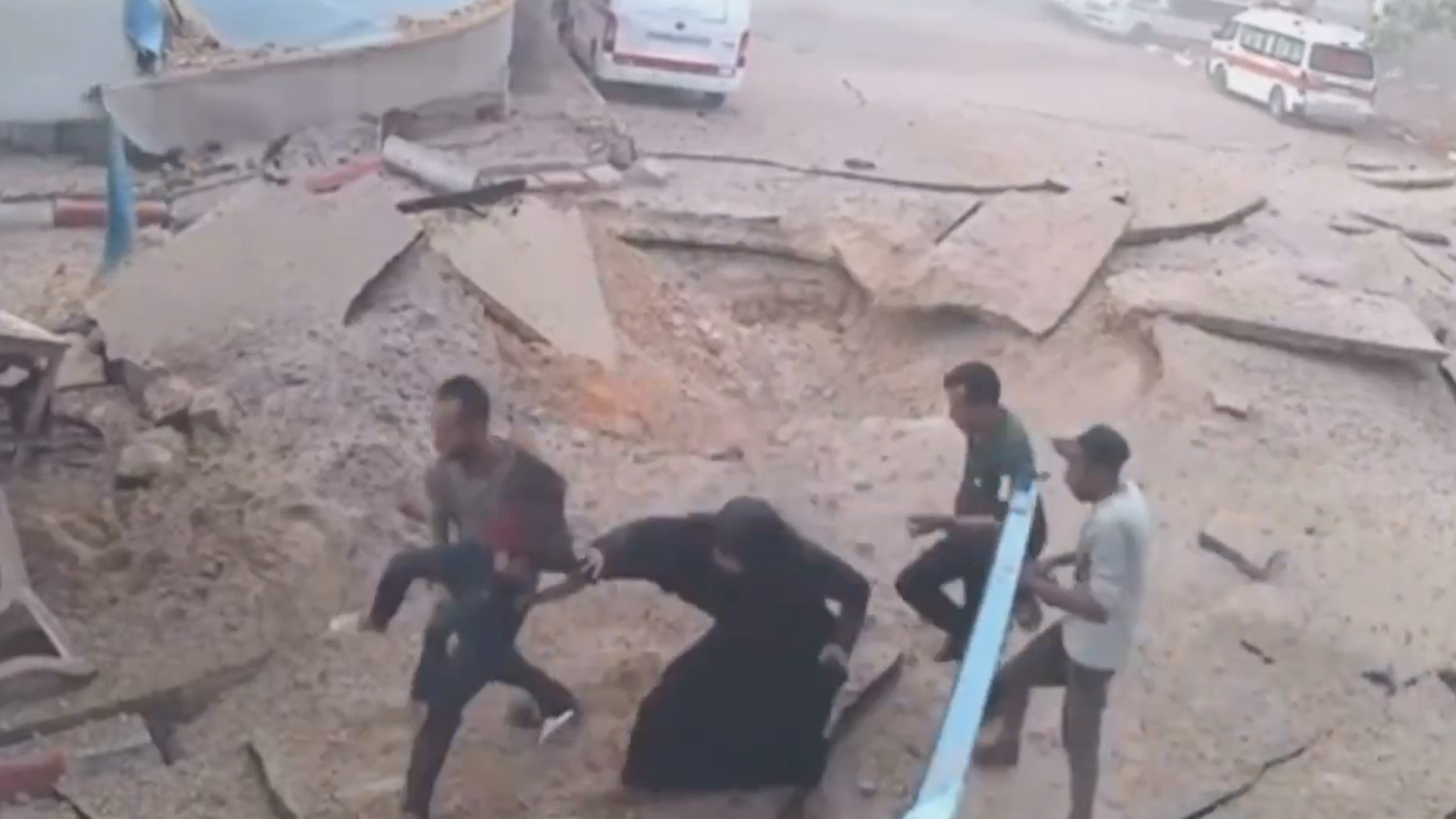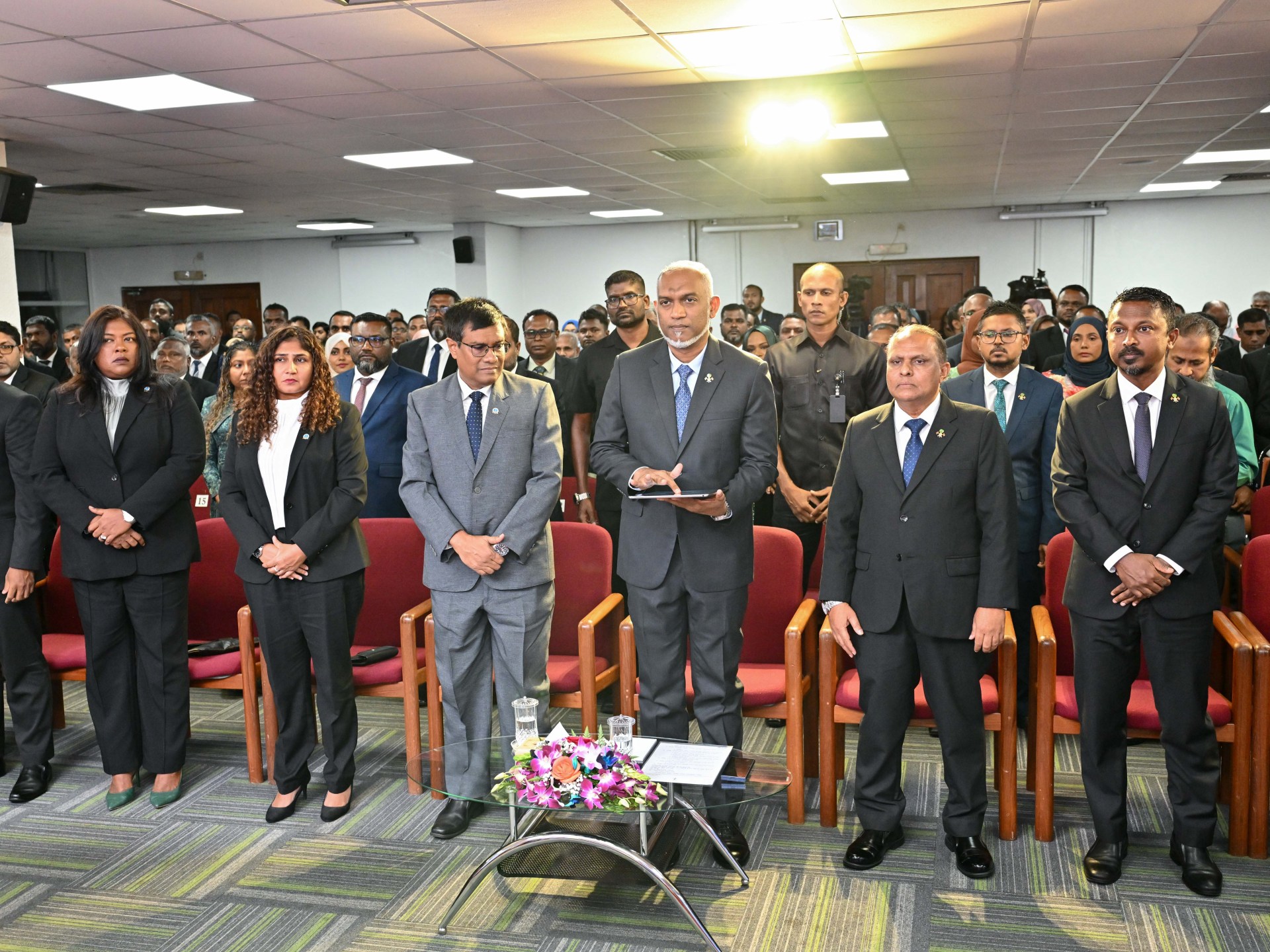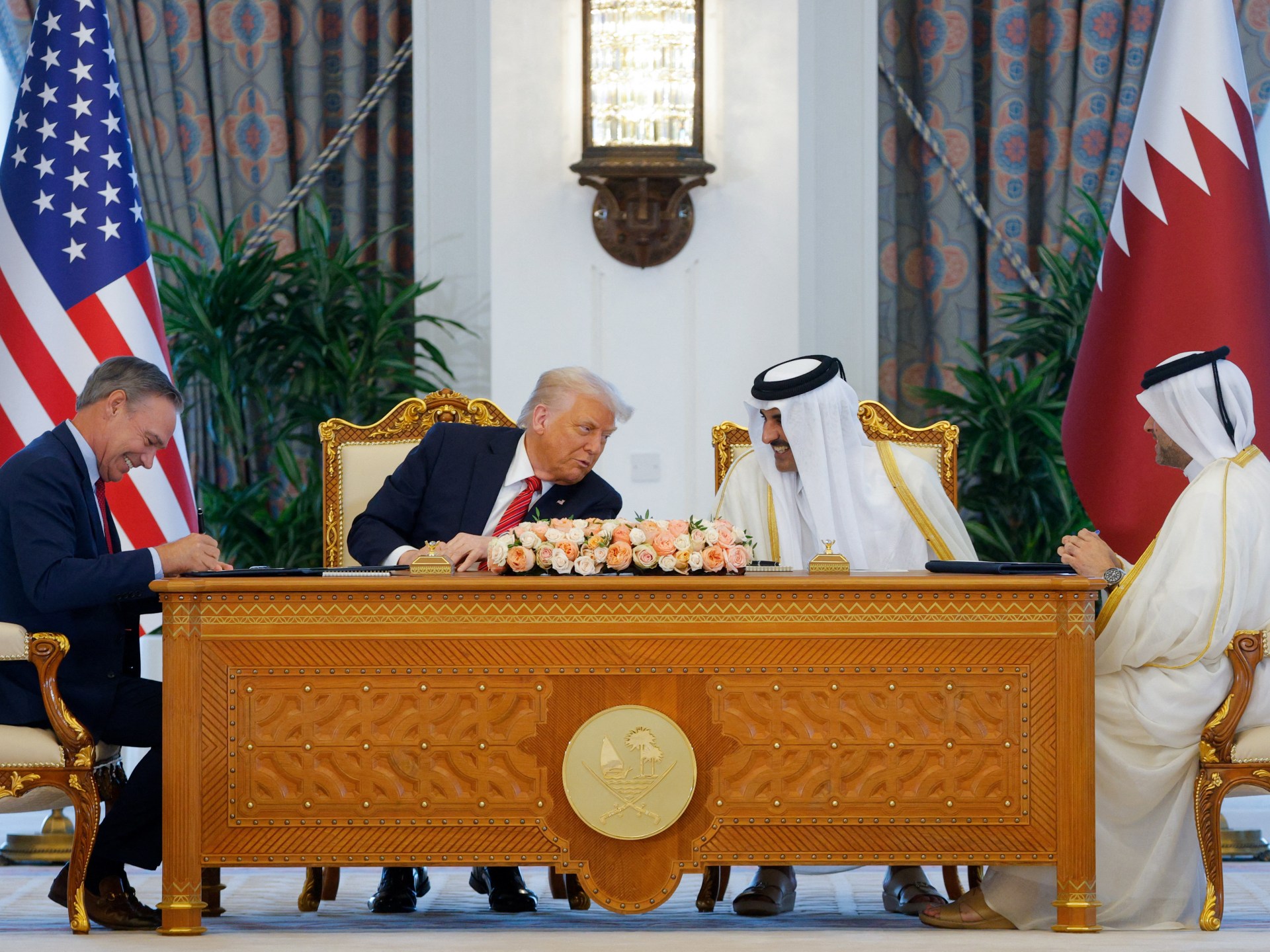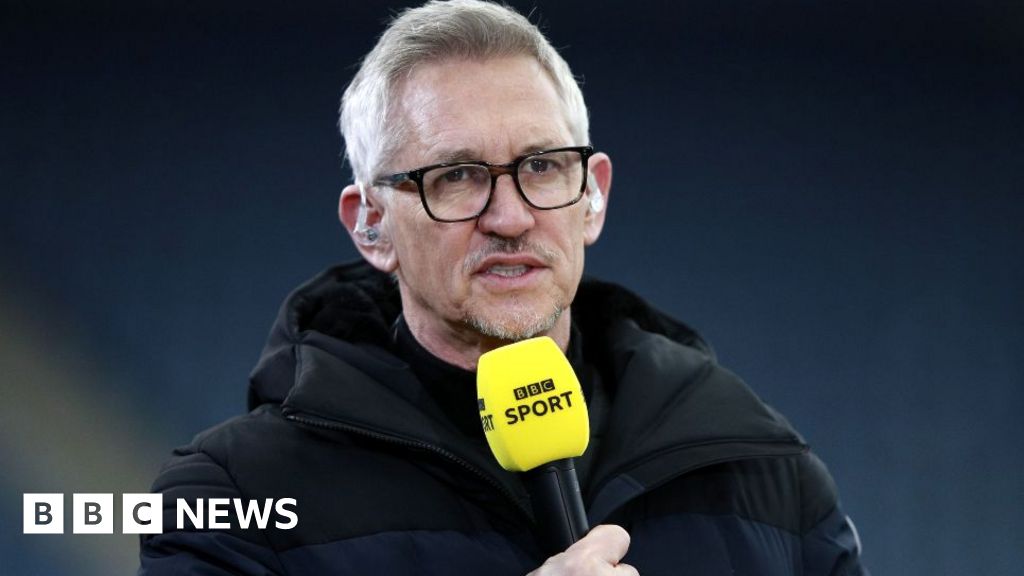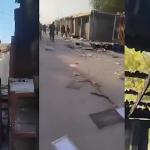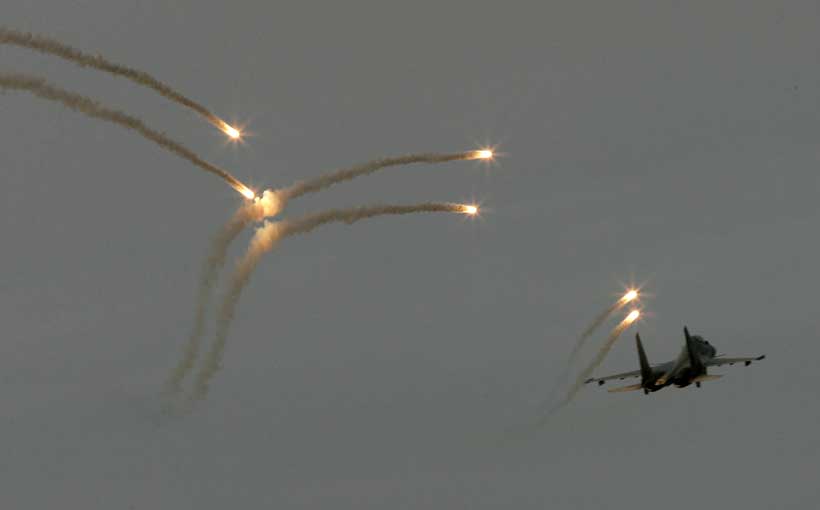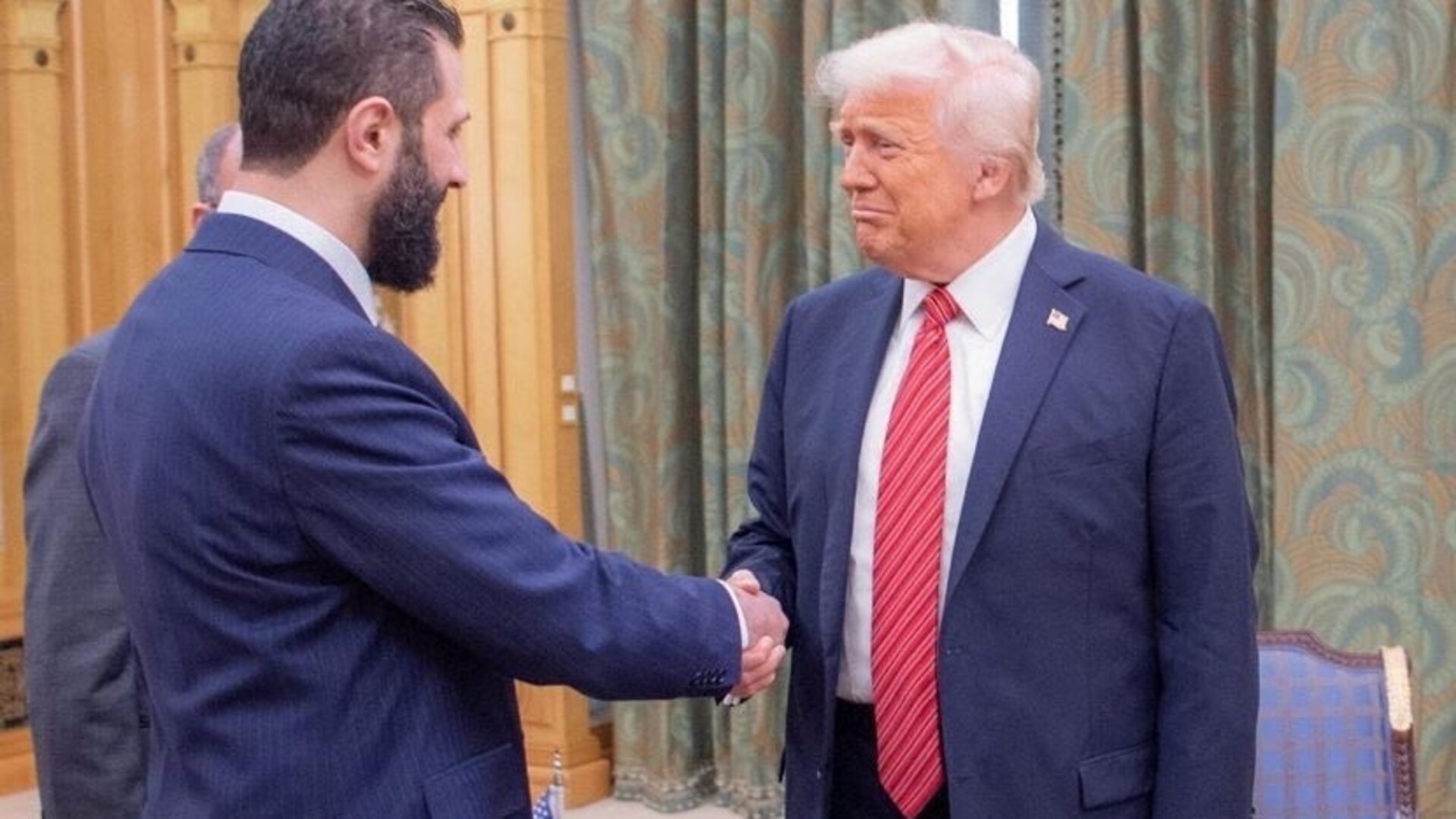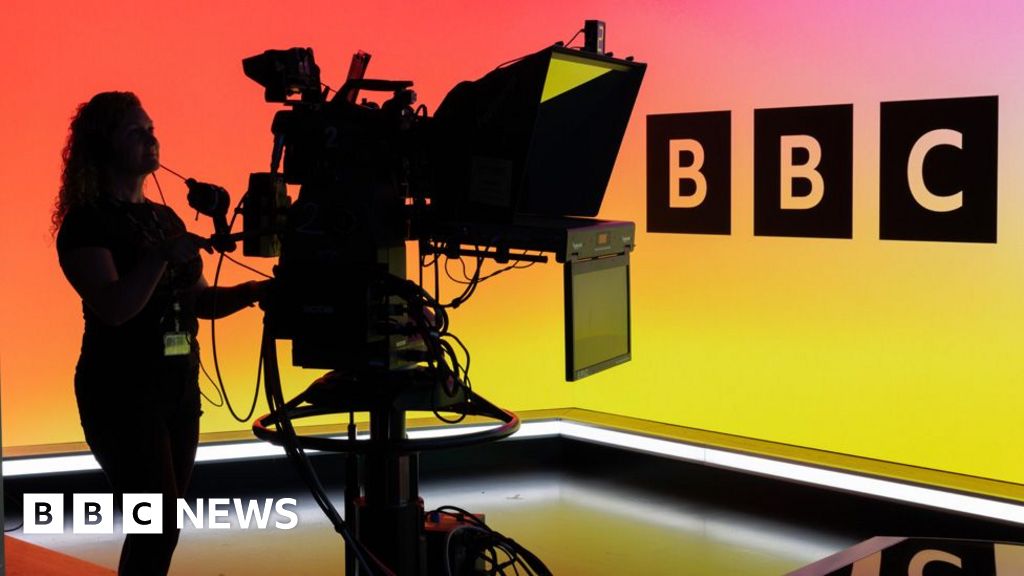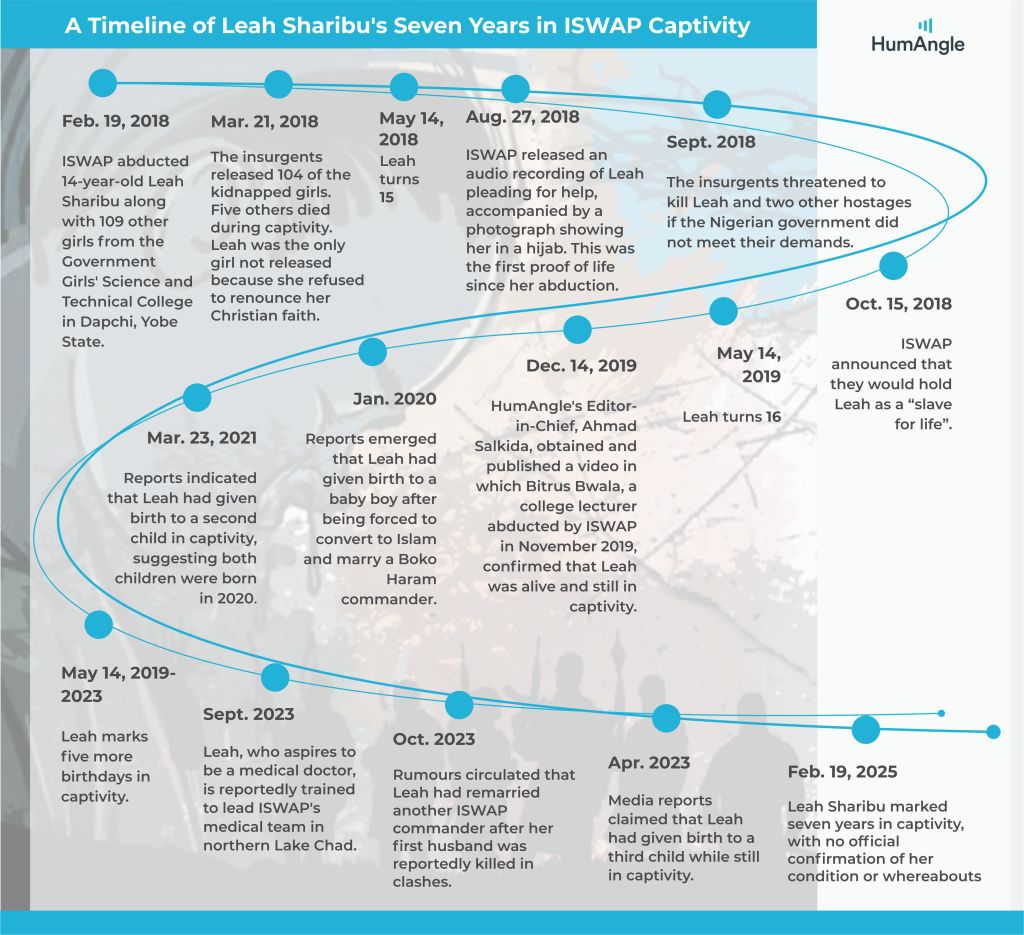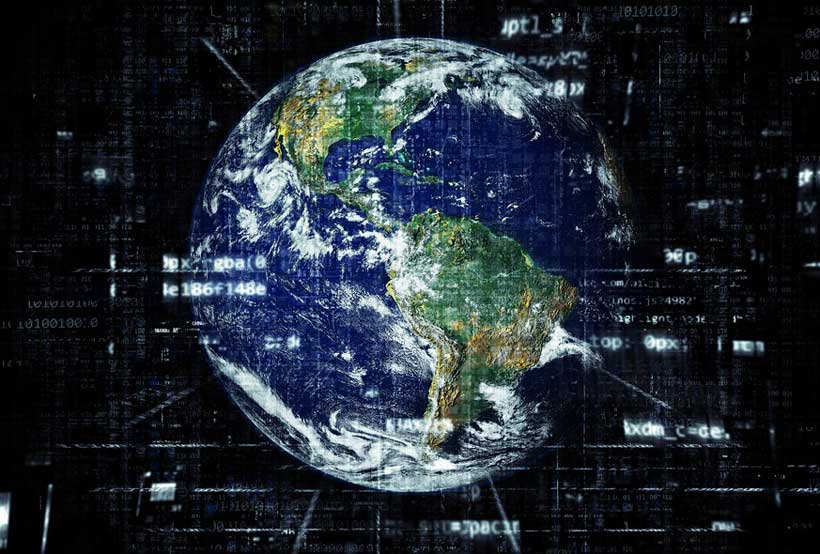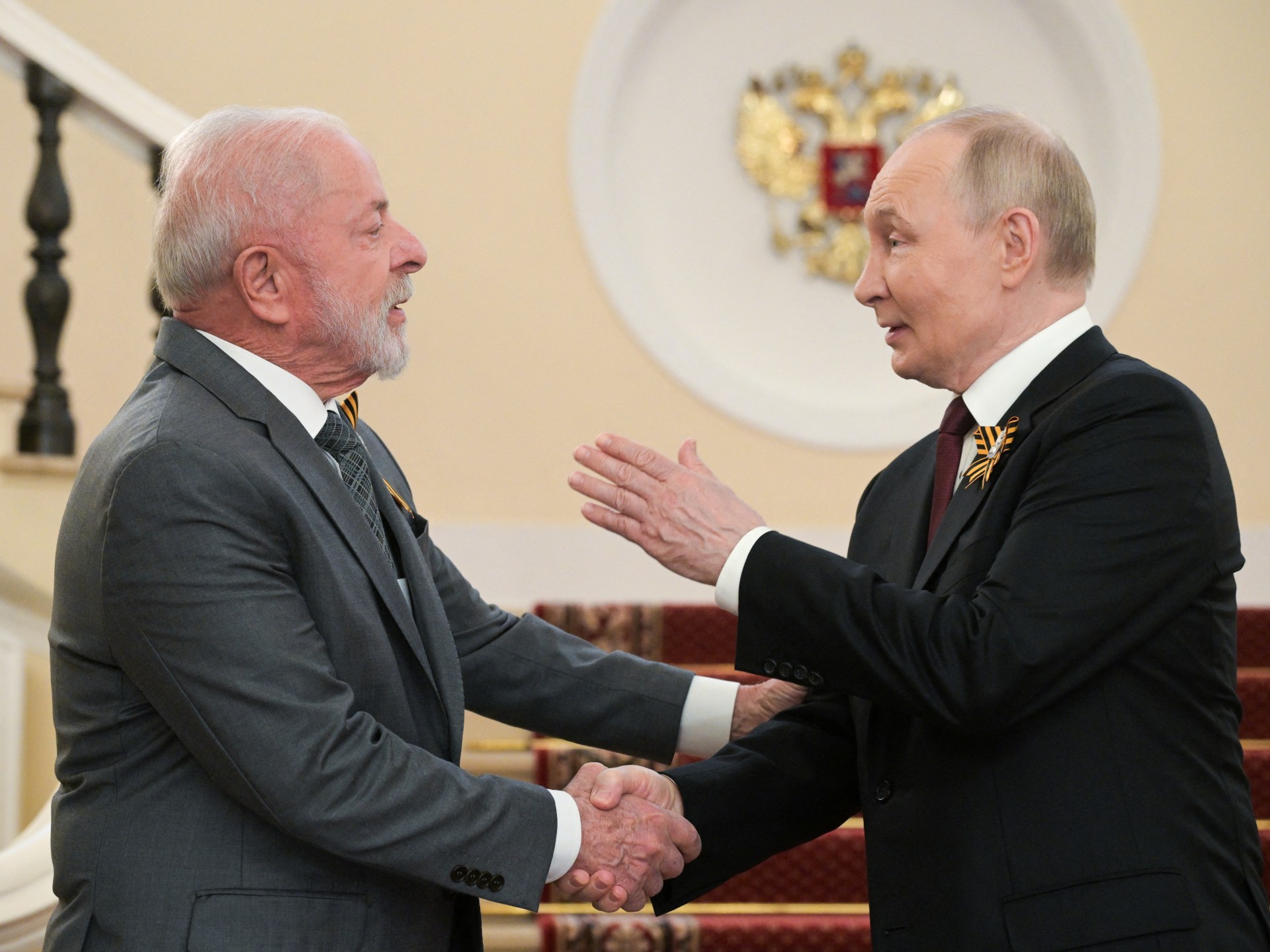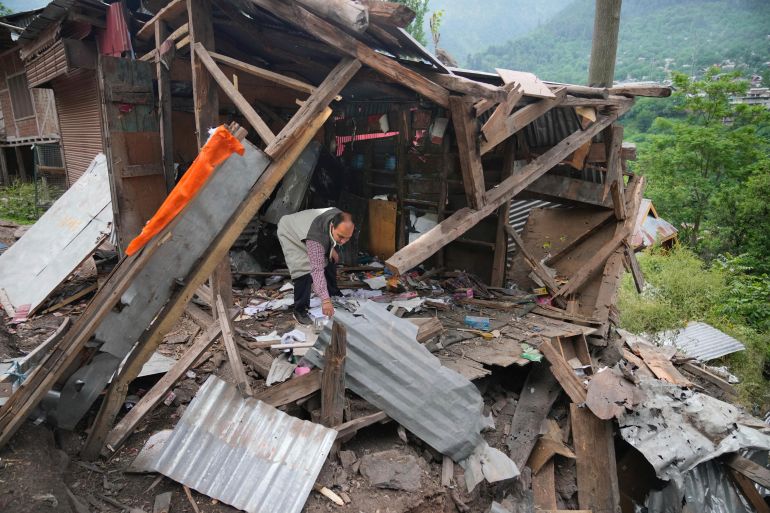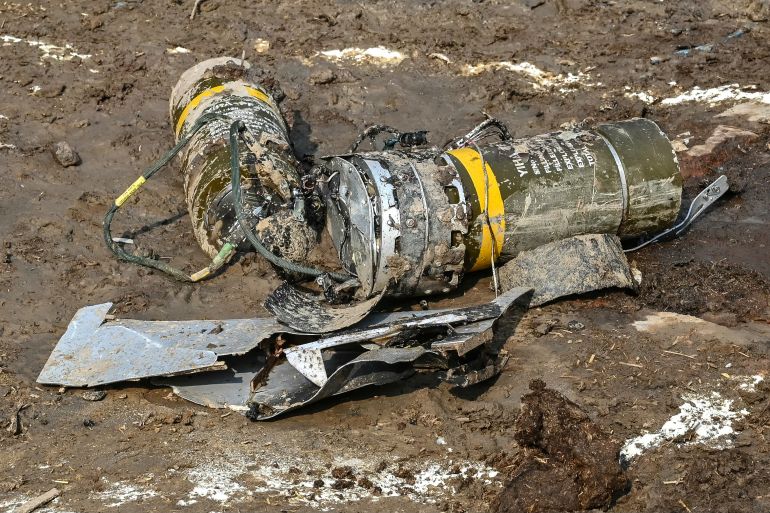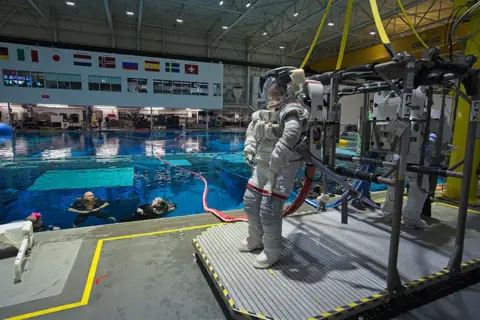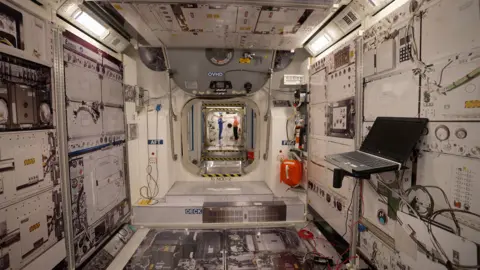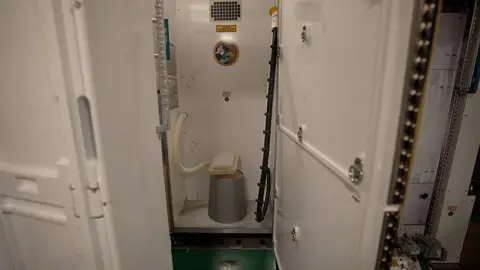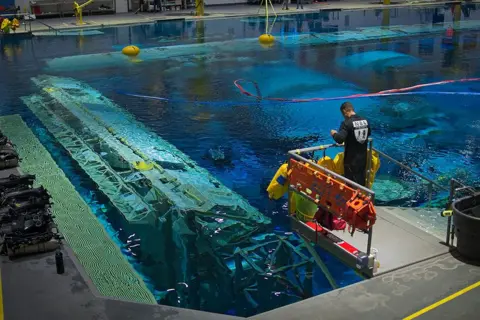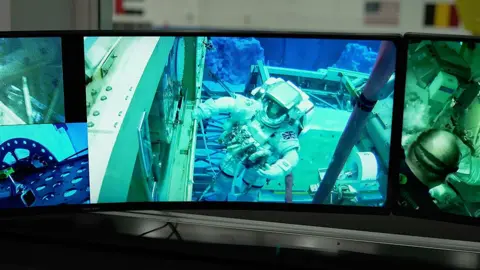Meet the ‘invisible’ backstage team who make the song contest tick
Music Correspondent
 Getty Images
Getty ImagesThirty-five seconds. That’s all the time you get to change the set at Eurovision.
Thirty-five seconds to get one set of performers off the stage and put the next ones in the right place.
Thirty-five seconds to make sure everyone has the right microphones and earpieces.
Thirty-five seconds to make sure the props are in place and tightly secured.
While you’re at home watching the introductory videos known as postcards, dozens of people swarm the stage, setting the scene for whatever comes next.
“We call it the Formula 1 tyre change,” says Richard van Rouwendaal, the affable Dutch stage manager who makes it all work.
“Each person in the crew can only do one thing. You run on stage with one light bulb or one prop. You always walk on the same line. If you go off course, you will hit somebody.
“It’s a bit like ice skating.”
The stage crew start rehearsing their “F1 tyre change” weeks before the contestants even arrive.
Every country sends detailed plans of their staging, and Eurovision hires stand-ins to play the acts (in Liverpool 2023, it was pupils from the local performing arts school), while stagehands start shaving precious seconds off the changeovers.
“We have about two weeks,” says Van Rouwendaal, who’s normally based in Utrecht but is in Basel for this year’s contest.
“My company is around 13 Dutchies and 30 local guys and girls, who rock it in Switzerland.
“In those two weeks, I have to figure out who’s right for each job. Someone’s good at running, someone’s good at lifting, someone’s good at organising the backstage area. It is a bit like being good at Tetris because you have to line everything up in a small space, in the perfect way.”
As soon as a song finishes, the team are ready to roll.
As well as the stagehands, there are people responsible for positioning lights and setting pyrotechnics; and 10 cleaners who sweep the stage with mops and vacuum cleaners between every performance.
“My cleaners are just as important as the stage crew. You need a clean stage for the dancers – but also, if there’s an overhead shot of somebody lying down, you don’t want to see shoeprints on the floor.”
The attention to detail is clinical. Backstage, every performer has their own microphone stand, set to the correct height and angle, to make sure every performance is camera perfect.
“Sometimes the delegation will say the artist wants to wear a different shoe for the grand final,” says Van Rouwendaal. “But if that happens, the mic stand is at the wrong height, so we’ve got a problem!”
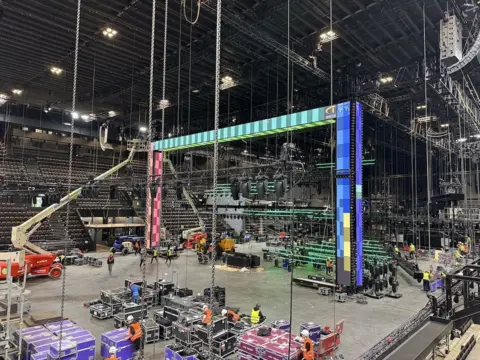 SRG / SSR
SRG / SSRSpontaneously changing footwear isn’t the worst problem he’s faced, though. At the 2022 contest in Turin, the stage was 10m (33ft) higher than the backstage area.
As a result, they were pushing heavy stage props – including a mechanical bull – up a steep ramp between every act.
“We were exhausted every night,” he recalls. “This year is better. We’ve even got an extra backstage tent where we prepare the props.”
 Getty Images
Getty ImagesProps are a huge part of Eurovision. The tradition started at the second ever contest in 1957, when Germany’s Margot Hielscher sang part of her song Telefon, Telefon into (you guessed it) a telephone.
Over the intervening decades, the staging has become ever more elaborate. In 2014, Ukraine’s Mariya Yaremchuk trapped one of her dancers in a giant hamster wheel, while Romania brought a literal cannon to their performance in 2017.
This year, we’ve got disco balls, space hoppers, a magical food blender, a Swedish sauna and, for the UK, a fallen chandelier.
“It’s a big logistics effort, actually, to get all the props organised,” says Damaris Reist, deputy head of production for this year’s contest.
“It’s all organised in a kind of a circle. The [props] come onto the stage from the left, and then get taken off to the right.
“Backstage, the props that have been used are pushed back to the back of the queue, and so on. It’s all in the planning.”
‘Smuggling routes’
During the show, there are several secret passageways and “smuggling routes” to get props in and out of vision, especially when a performance requires new elements half-way through.
Cast your mind back, if you will, to Sam Ryder’s performance for the UK at the 2022 contest in Italy.
There he was, alone on the stage, belting out falsetto notes in his spangly jumpsuit, when suddenly, an electric guitar appeared out of thin air and landed in his hands.
And guess who put it there? Richard van Rouwendaal.
“I’m a magician,” he laughs. “No, no, no… That was a collaboration between the camera director, the British delegation and the stage crew.”
In other words, Richard ducked onto the stage, guitar in hand, while the director cut to a wide shot, concealing his presence from viewers at home.
“It’s choreographed to the nearest millimetre,” he says. “We’re not invisible, but we have to be invisible.”
 Reuters
ReutersWhat if it all goes wrong?
There are certain tricks the audience will never notice, Van Rouwendaal reveals.
If he announces “stage not clear” into his headset, the director can buy time by showing an extended shot of the audience.
In the event of a bigger incident – “a camera can break, a prop can fall” – they cut to a presenter in the green room, who can fill for a couple of minutes.
Up in the control room, a tape of the dress rehearsal plays in sync with the live show, allowing directors to switch to pre-recorded footage in the event of something like a stage invasion or a malfunctioning microphone.
A visual glitch isn’t enough to trigger the back-up tape, however – as Switzerland’s Zoë Më discovered at Tuesday’s first semi-final.
Her performance was briefly interrupted when the feed from an on-stage camera froze, but producers simply cut to a wide shot until it was fixed. (If it had happened in the final, she’d have been offered the chance to perform again.)
“There’s actually lots of measures that are being taken to make sure that every act can be shown in the best way,” says Reist.
“There are people who know the regulations by heart, who have been playing through what could happen and what we would do in various different situations.
“I’ll be sitting next to our head of production, and if there’s [a situation] where somebody has to run, maybe that’s going to be me!”
 Sarah Louise Beennett
Sarah Louise Beennett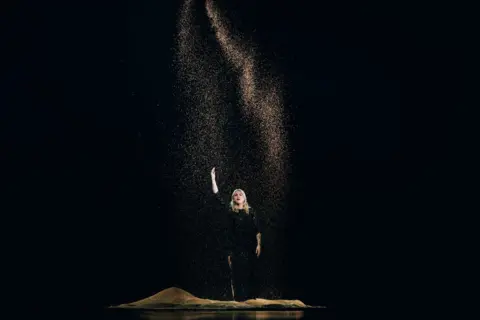 Sarah Louise Bennett
Sarah Louise BennettIt’s no surprise to learn that staging a live three-hour broadcast with thousands of moving parts is incredibly stressful.
This year, organisers have introduced measures to protect the welfare of contestants and crew, including closed-door rehearsals, longer breaks between shows, and the creation of a “disconnected zone” where cameras are banned.
Even so, Reist says she has worked every weekend for the past two months, while Van Rouwendaal and his team are regularly pulling 20-hour days.
The shifts are so long that, back in 2008, Eurovision production legend Ola Melzig built a bunker under the stage, complete with a sofa, a “sadly underused” PS3 and two (yes, two) espresso machines.
“I don’t have hidden luxuries like Ola. I’m not at that level yet!” laughs Van Rouwendaal
“But backstage, I’ve got a spot with my crew. We’ve got stroopwafels there and, last week, it was King’s Day in Holland, so I baked pancakes for everyone.
“I try to make it fun. Sometimes we go out and have a drink and cheer because we had a great day.
“Yes, we have to be on top, and we have to be sharp as a knife, but having fun together is also very important.”
And if all goes to plan, you won’t see them at all this weekend.



